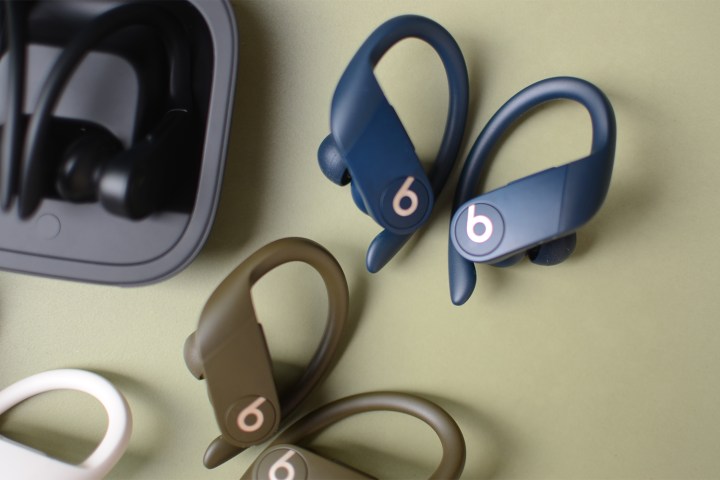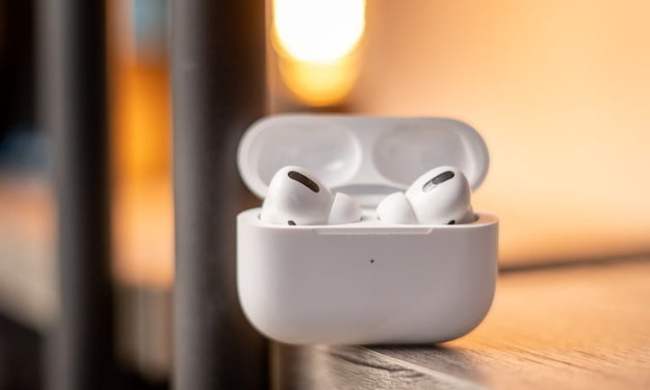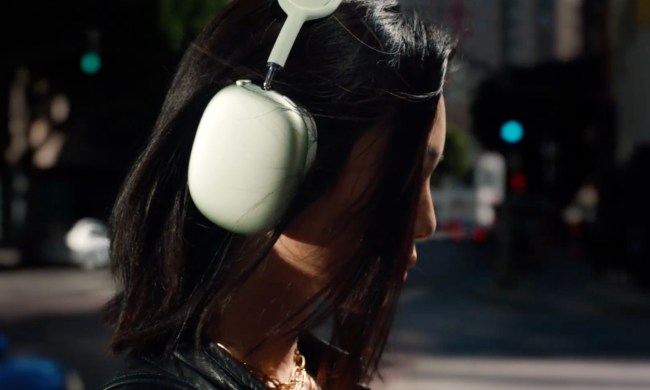One of the biggest scores in Apple’s billion-dollar acquisition of Beats by Dre was the company’s streaming service, which was later transformed into Apple Music. But of course, Beats started as a headphone company, and with the announcement of the Powerbeats Pro wireless headphones, we’re beginning to see the other side of that coin.
Apple has two major players, excluding the AirPods Pro, in the wireless earbuds game: The crazy-popular AirPods (aka the AirPods 2), and the fully wireless Powerbeats Pro. But what are the primary differences between the two and which is right for you? We’ve lined up both in a side-by-side comparison to help you decide.
Editor’s Note: Here, we compare the Beats Powerbeats Pro to the Apple AirPods 2 with Wireless Charging Case — not to be confused with the top-of-the-line Apple AirPods Pro.
Design

While both come from the Apple family, these two pairs of fully wireless earbuds couldn’t be more different when it comes to design. As mentioned, Apple’s AirPods 2 remain exactly the same as they were in 2016 on their exterior, including their familiar protruding antenna, an unmalleable acoustic chamber that fits just inside your ear canal to let in ambient sound, and, unfortunately for the more active among us, an utter lack of water resistance.
In contrast, the Powerbeats Pro borrow from other sport-friendly Powerbeats models, offering a design that’s much more suited for the gym (or the rain). That includes wraparound earhooks to keep the earbuds in place, multiple eartips to customize the fit, and IPX4 water- and sweat resistance.
Apart from added durability, we like the fit of the Powerbeats Pro better, as they’re both more secure and more comfortable. If you like having a choice of color when it comes to your tech, you’ll like the Powerbeats Pro more too: Instead of Apple’s iconic white-only garb, the Powerbeats come in your choice of ivory, moss, navy, or black.
Features and controls

Design aside, there are some obvious similarities between these two products in the features department — they both come from Apple, after all. A big part of that can be traced to Apple’s H1 chip. Thanks to the H1, both pairs allow you to use one earbud at a time if you like, both allow for hands-free Siri commands (with iOS devices only, of course), and both offer easy transference between source devices. Thanks to built-in sensors, both pairs also pause music whenever you pull an earbud from your ear.
They begin to differ when it comes to controls. The AirPods offer only one way to control them outside of Siri, by tapping on the side of either earbud to do things like play music and skip songs. The Powerbeats Pro take things further, offering a multifunction button for playback control on each earbud, as well as (thankfully) a volume rocker that, in our experience, is among the most useful onboard controls a pair of wireless earbuds can employ.

As mentioned, both pairs offer basic voice controls via Siri as well, but especially because Siri only works for iOS devices, the Powerbeats Pro’s volume rocker is a major upgrade.
Charging case

As with virtually all fully wireless earbuds, both the AirPods and the Powerbeats Pro come with a charging case, serving as their respective homes and the only way to juice the buds up. Both cases offer additional charges to provide more than 24 hours of total playback time, but that’s pretty much the only similarity.
Apple’s AirPods have always had one of the most compact and convenient charging cases, and that remains true in the AirPods 2. The AirPods are also available with a wireless charging case (though it pushes the cost from $159 to $199). The Powerbeats Pro’s charging case does not come with wireless charging (even though they cost $250) and is much bigger and bulkier than the AirPods case, partly because it needs to account for those large earhooks.

Battery life
While the Powerbeats Pro’s bulkier case counts against them, they take all those chips back when it comes to battery life, offering a full 9 hours of playback per charge, compared to the AirPods’ 5 hours. That places the latest Beats earbuds among the longest-lasting earbuds in their class. This also means you’re a lot less likely to need that bulky case when you take them on the road, as they’ve got well over a day’s worth of audio playback for most users.
Both pairs of earbuds also offer rapid charging for as much as 3 hours of battery playback on a 15-minute charge for the AirPods, and 4.5 hours on the same amount of charging time for the Powerbeats Pro. We expected to see a large boost in battery life for the 2019 AirPods, but it appears Apple saved that for the pricier Powerbeats Pro instead.
Sound quality

This one is no contest. While the Powerbeats Pro’s sound is much bassier, it’s also brilliantly clear, offering impressive instrumental separation, detail, and dynamics.
The AirPods remain the same as they were in 2016 when it comes to sound performance. If you like their smoothed-over instrumental attack, relatively powerful bass, and generally accessible sound signature, you’ll be happy to hear that — literally. Due to the AirPods’ lack of a tight seal, they’re not able to isolate instruments as well as other earbuds, but on the other hand, that allows you to stay alert to what’s happening around you. Still, we’d choose the Powerbeats Pro every time.
Connection reliability
The AirPods’ greatest features are their simplicity and their reliability. They were among the first totally wireless earbuds to offer rock-solid connection, and they’re still among the best in that category.
Unfortunately, we didn’t have the same experience with the Powerbeats Pro. After heavy use of two pairs with multiple phones, we found their connection less stable than many new true wireless earbuds, and they often broke up in crowded areas — especially with the phone in a back pocket. We’ll be continuing to monitor this issue and will update this post if anything changes due to a firmware or hardware update.
Overall
In most respects, the Powerbeats Pro have emerged as the more capable, more durable, and more feature-packed option from Apple HQ — not to mention their top-shelf battery life. At $250, they’re among the most pricey wireless earbuds in their class. And because of their connection reliability issues in our testing, we can’t give them our full seal of approval.
The AirPods 2 with Wireless Charging Case may not be exciting, but they are an affordable, tried-and-true option custom-built for iPhone users — especially if you don’t opt for the wireless charging case (and frankly, we’re not sure how useful it is since you won’t be charging your earbuds case every day). For now, we recommend those choosing between the two to stick with the AirPods until further notice.
We’d also be remiss if we didn’t mention that there are plenty of viable choices not made by Apple, many of which can be found on our list of the best true wireless earbuds.
Powerbeats Pro:
AirPods:


